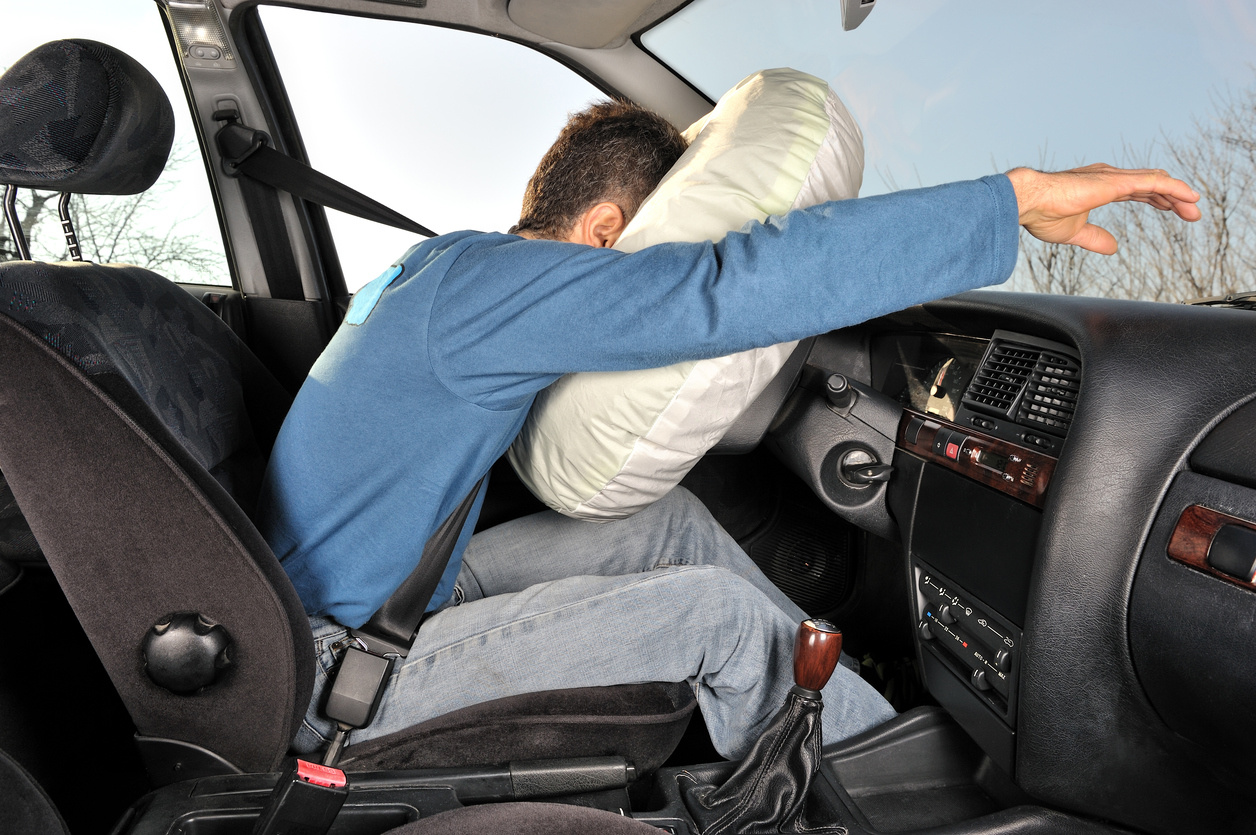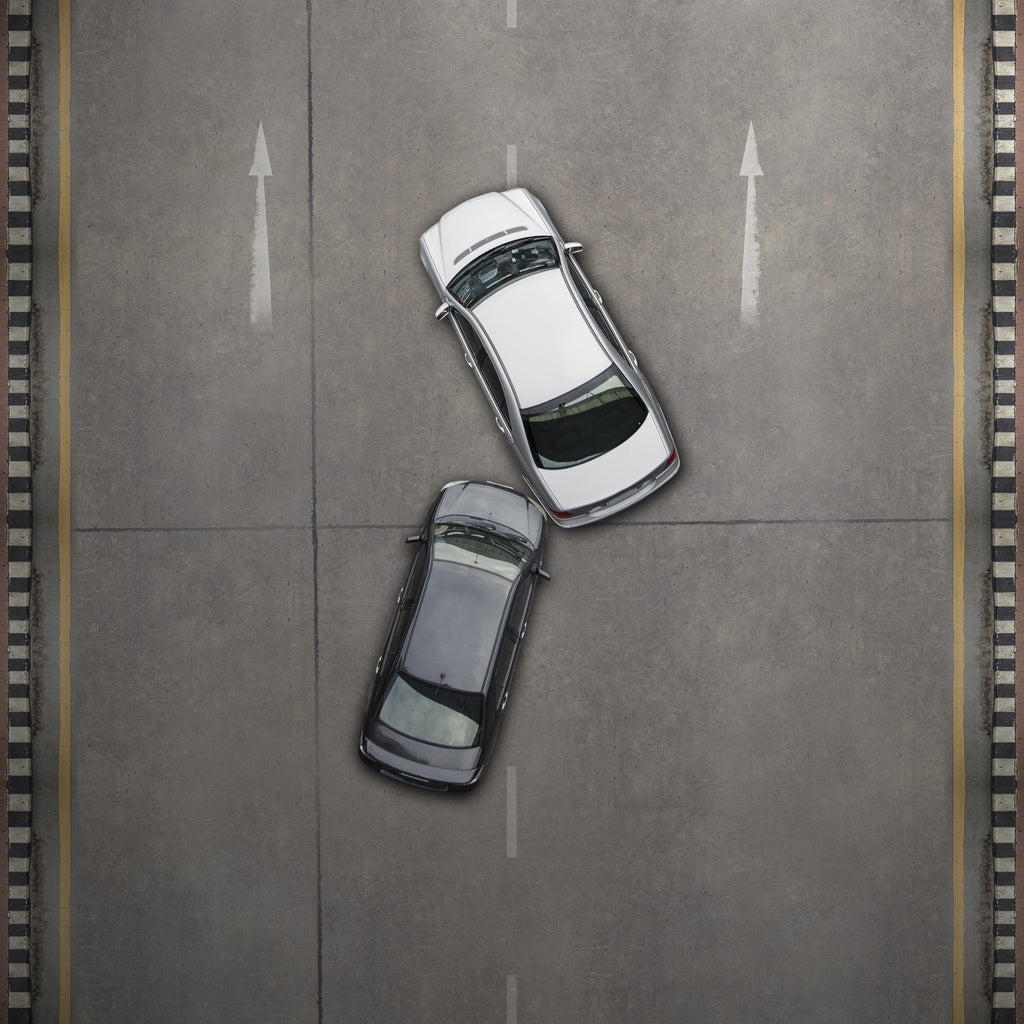
For people of a certain age, the thought of car safety tests probably triggers memories of the crash-test dummies, Vince and Larry. Since the mid-'80s, these two have raised awareness of safe driving practices, popping up in award-winning public service announcements, kids’ cartoons, and even the Smithsonian.
While these dummies playfully zoomed through brick walls and bullseyes, real crash tests are much more regimented. Each year, there are an average of 6 million car accidents in the United States, and according to the National Highway Traffic Safety Administration (NHTSA), 37,461 people died as a result of those accidents in 2016.
Crash tests, administered by a pair of agencies, play a big role in limiting those fatalities. The NHTSA and the Insurance Institute for Highway Safety (IIHS) use different batteries of tests and ratings, but combined, they offer valuable insight into car safety.
NHTSA Crash Tests

The NHTSA has been around since 1970, when the Highway Safety Act established this government agency and its mission: “To reduce deaths, injuries and economic losses resulting from motor vehicle crashes.” In 1993, it introduced the 5-star rating system still in use today—although the tests have continued to evolve over time.
Each year, the NHTSA tests roughly 90 to 150 cars across seven vehicle categories. Like with other government-backed tests (such as fuel economy), not every car from every manufacturer that hits the road gets examined. Instead, the NHTSA focuses on debuting vehicles and those that have received major redesigns. Each vehicle is evaluated in four areas:
- Frontal crash test
- Side barrier crash test
- Side pole crash test
- Rollover resistance test
Utilizing standardized conditions, including the positions of the crash-test dummies and the speed at which a barrier gets hit, these tests simulate common crash scenarios like head-on collisions, being T-boned, and rollovers. The NHTSA uses the results of these tests to score vehicles from 1 to 5 stars. The fewer the stars, the greater any occupant's risk of injury.
You can search for vehicles with 5-star ratings on the NHTSA website and its corresponding site, Safecar.gov. On both websites, the NHTSA also includes recall info.
IIHS Car Safety Tests

Founded by a trio of insurance agencies in 1959, the IIHS predates the NHTSA. A decade after its creation, it transitioned to a nonprofit research organization that placed a scientific focus on reducing deaths, injuries, and property damage from car crashes. Beginning with cars from the 2006 model year, it introduced the Top Safety Pick designation, which you may have seen. In 2013, it added the Top Safety Pick+ rating.
The IIHS tests about 80 vehicles per year (again, typically new models) on two aspects: crashworthiness, and crash avoidance and mitigation. Crashworthiness means how a vehicle protects its riders during a crash. Crash avoidance and mitigation covers car technology that helps prevent crashes or decrease their severity (like automatic emergency braking, for instance).
To determine crashworthiness, the IIHS performs six tests:
- Driver-side small overlap front
- Passenger-side small overlap front
- Moderate overlap front
- Side
- Roof strength
- Head restraints
As with the NHTSA tests, these scenarios attempt to replicate common crashes (even if the language to do so isn’t that common). For instance, “overlaps” refer to a section of a car’s width. A “moderate overlap” crash tests a collision that covers 40 percent of a vehicle’s width, while “small” overlap covers just 25 percent—or roughly akin to a hitting the front corner of your car. Vehicles are rated Good, Acceptable, Marginal, or Poor on these tests.
The IIHS uses the same scoring system to rate car headlights. However, for crash avoidance and mitigation, those ratings switch to a scale of Basic, Advanced, or Superior. A vehicle’s performance is determined by the type of front crash-prevention system a car has, as well as the performance of those systems, measured during track tests.
To be a Top Safety Pick, a car must earn at least a Good rating in all the crashworthiness tests except passenger-side small overlap front, which was introduced in 2016 and will presumably factor into this equation in the future. The car also needs to have an Advanced or Superior crash prevention and mitigation rating. To add the “+” to its designation, a car must earn at least an Acceptable headlight rating while meeting the previous criteria. You can search IIHS ratings here.
Choosing Your Car

Now that you know how crash-test ratings work, you shouldn’t have a problem choosing a safe car. Simply search for a 5-star vehicle from the NHTSA or a Top Safety Pick from the IIHS in their respective databases, right? Well, of course, things aren’t that easy. Overall safety ratings should definitely play a role in your decision, but don’t trust them blindly.
In general, most cars (especially new ones) boast positive safety ratings—a reported 99 percent of 2016 models tested got 4 or 5 stars from the NHTSA. So ultimately, think about your own situation and decide if there are any specific details that matter more to you. If you expect to have passengers or children in your car, then passenger- and side-crash performance may matter more to you. Do you struggle with night vision? Look for Superior headlights.
Consider these factors in conjunction with your other car-buying needs, like how much car you can afford, for instance. After all, how you drive can play a bigger role in your safety than a car’s rating. Avoid getting behind the wheel if you’re drowsy or otherwise impaired, and pay attention when you’re on the road. Car safety features are designed—and tested—to help if an accident unfortunately happens. But we hope you will never have to rely on them.
Related Topics
What Do I Do with My Totaled Car?
12 Electronic Safety Systems to Look For on Your Next Car
Get Your Driver’s License in 4 Steps
